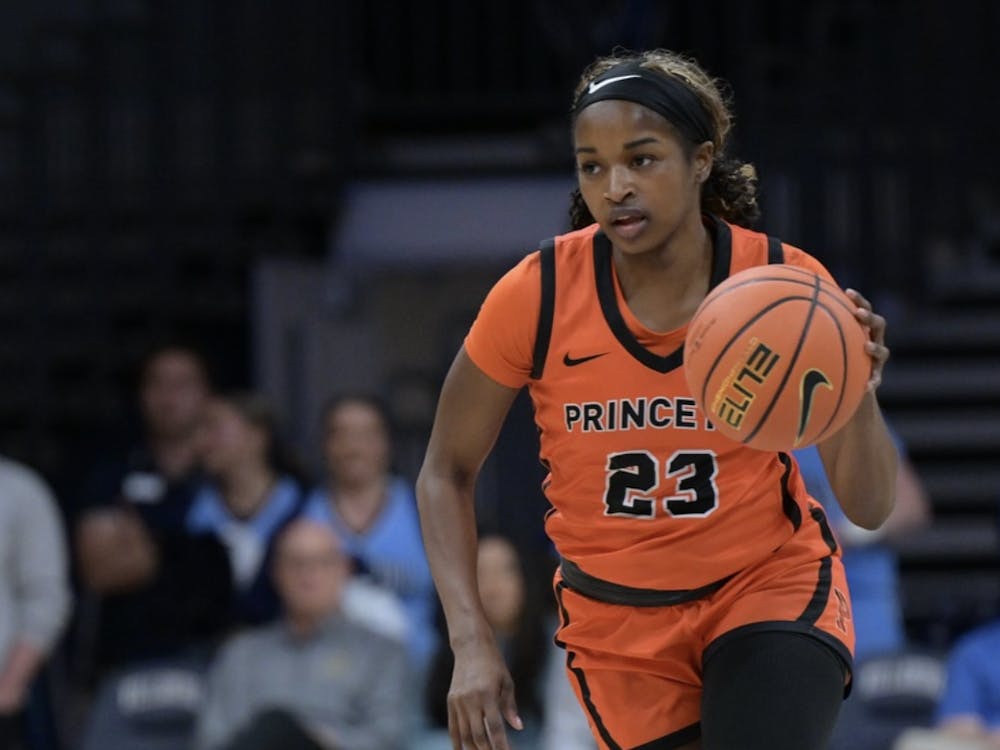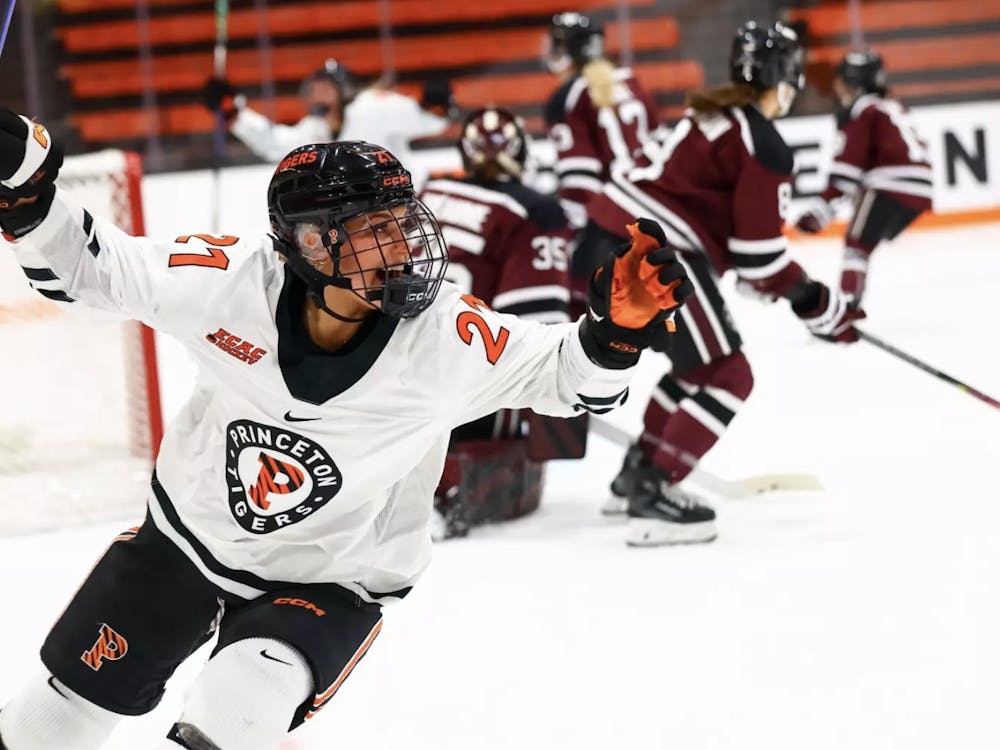When Shirley Tilghman took over as University President in 2001, she had very little experience with intercollegiate athletics. A former molecular biology professor, Tilghman said much of her learning about sports at Princeton was done “on the job.”
Twelve years later, her successor expects to have the same experience. When he begins his term in July, newly appointed University President Christopher Eisgruber ’83 will take on a number of athletic-related responsibilities, such as setting University policies that affect athletes on 36 varsity teams and having a key role in all proposed Ivy League regulations. And on many of those issues, Eisgruber says, he has a lot of learning to do.
Eisgruber was not a varsity athlete when he attended Princeton three decades ago; his former roommate Charles Johnson ’83 has characterized him as “not remarkably athletic.” Still, Eisgruber said, he felt the athletics department contributed positively to his experience as a student.
“One of the things that made Princeton attractive to me — by comparison to places like MIT, where I could have gone as a physics major — is I wanted to come to a place where there were athletic events that I could attend,” he said. “I was a big fan of our basketball team in particular when I was a student here, just as I am now.”
Soon, Eisgruber will become much more than just a fan — as an Ivy League president, he’ll have a very important role in determining league-wide athletic policies. Most of the Ancient Eight’s distinctive features were conceived and implemented by university presidents, including the Academic Index, a tool for quantifying and regulating the academic qualifications of recruited athletes, and the league’s ban on postseason play in football, which dates back to the original Ivy Group Agreement of 1954.
In Tilghman’s 12-year tenure, the Ivy League presidents have been involved in several high-profile policy discussions. In 2002, they instituted a seven-week moratorium on organized practices for out-of-season teams, which was criticized by athletes and modified the following year. In 2006, football’s postseason ban was upheld despite a swell of opposition from the Ivy Council as well as players, coaches and athletic directors. And in 2011 and 2012, the Ivy League passed presidential-driven reformsaimed at reducing concussions in contact sports.
Despite the fact that half of the Council of Presidents will have changed in a two-year span — with Brown’s Christina Paxson having started her term in 2012 and Eisgruber, Yale’s Peter Salovey and Dartmouth’s Philip J. Hanlon set to begin in 2013 — Tilghman said she does not anticipate any dramatic overhauling of Ivy League athletics in the near future. But she named two issues which she believes will be priorities for the Ivy leaders.
The first is protecting the safety of athletes, and in particular, preventing concussions. In 2010, the Ivy presidents formed a committee to study the effects of head-to-head collisions in football, which led to the passing of several new measures in the summer of 2011, including a limit on the number of allowable full-contact practices. The following year, similar rules were approved for men’s and women’s lacrosse and soccer; as a result, the Ivy League now has some of the most advanced concussion-prevention regulations in organized sports.
But much is still unknown about the causes of concussions and the best preventive measures. Last summer, the Ivy League and the Big Ten Conference announced collaborative plans to research head injuries in sports; as these findings are revealed, the league presidents may have to reconsider their existing regulations.
Eisgruber said concussions and player safety were topics about which he particularly feels the need to learn more information.
“I think the safety and well-being of our athletes always has to be a priority, but beyond saying that, I can’t be much more elaborate,” he said.
Another concern of Ivy League presidents is the “intensification” of amateur athletics around the nation, according to Tilghman. With athletes expected to perform at higher skill levels and commit more time to training, she said, Ivy League schools must make sure that they are still able to have a full academic experience.

“I do worry ... that the intensification in athletics that we have seen over the last 25 years is something that the Ivy League has to continually contend with, if it is going to sustain the student-athlete ideal,” Tilghman said. “What’s happening off-season is continual training, and that includes the summers. Those are the kind of expectations around performance that didn’t exist 25 years ago.”
One area in which Eisgruber does have some experience with the athletic department is its funding. As provost, Eisgruber chairs the Priorities Committee and makes budgetary recommendations to the president and the Board of Trustees. The University spent nearly $21 million on athletics in 2011-12, according to data released under the Equity in Athletics Disclosure Act; while some of that sum is funded by sponsorships and booster groups, the majority comes from the University’s general operating budget.
Eisgruber said he believes the University’s current balance between spending on athletics and other priorities is “fine.”
“All the issues there have been around the margins,” he said.
Eisgruber may still be learning about the main issues in Ivy League athletics, but throughout his term as President, he will have no shortage of voices offering him advice. Some may be fervent supporters of the athletics department, such as the hundreds of football alumni who signed a letter to Tilghman urging her to “personally act to help restore Princeton’s winning football tradition” last summer, according to the Princeton Alumni Weekly. Others may be faculty or community members who are critical of the Ivy League’s current athletic environment.
For his part, Eisgruber said he feels varsity athletics are very valuable to the University, because of the benefits they provide participating athletes as well as the ways they unite people from all parts of Princeton.
“There are lots of ways in which our campus comes together, but one of them is through athletic events,” he said. “I’ve enjoyed that, first as a student and as a faculty member. You get things like the bonfire — that’s a very special moment on the campus, and it’s wonderful to see the town, and the students and generations of alumni coming together around that.”







